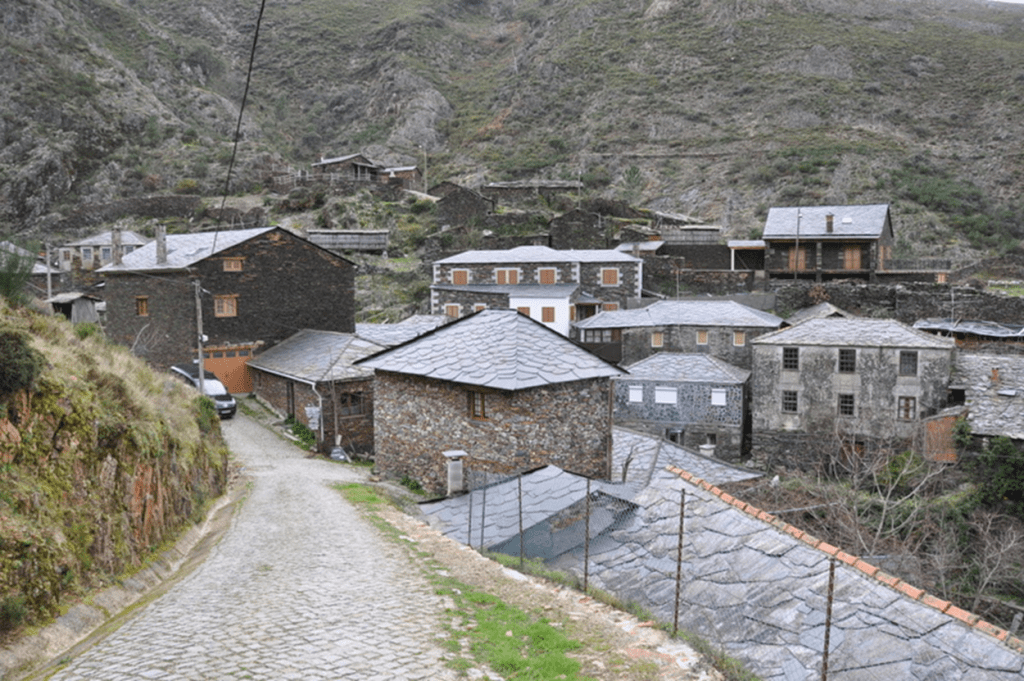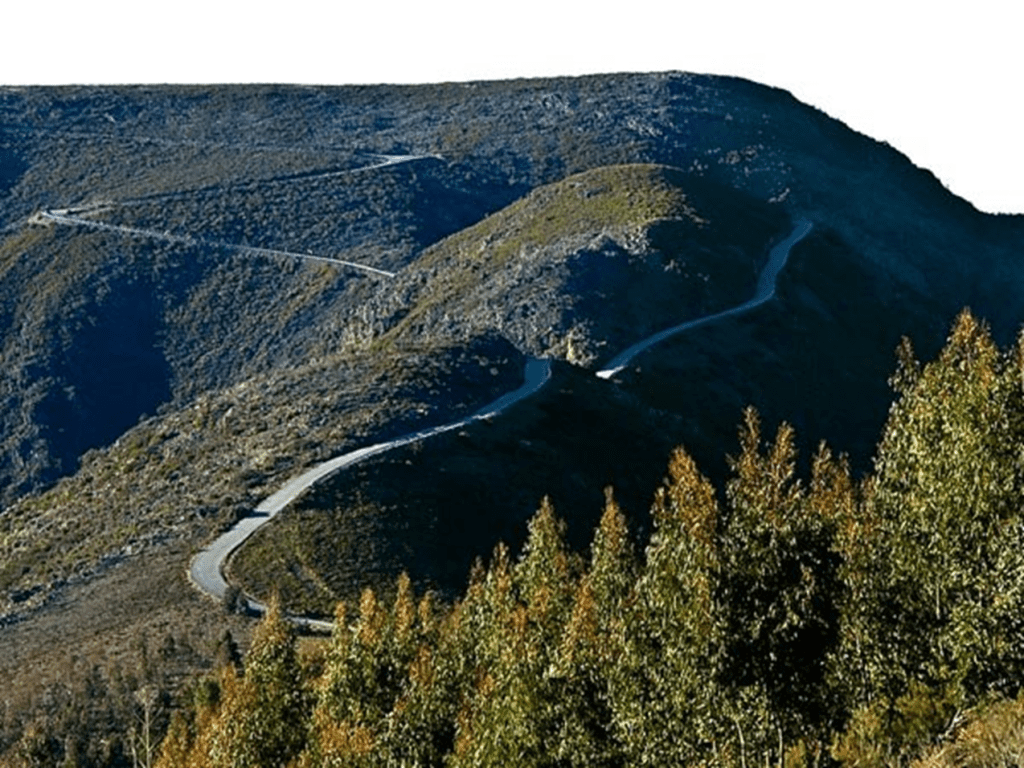The “Register of the Population of the Kingdom (1527)” notes the village’s existence as early as the 16th century. At that time, the hamlet, then called “Pena,” had just five residents and was part of the term Villa de Góis, indicating its small size and remote nature even then.

Historical Background
The origins of settlement in the Góis municipality, where Aldeia da Pena is located, trace back to prehistoric times. The archaeological evidence suggests that the earliest known settlements in this area date to the Neolithic or Bronze Age I periods. These early tribes likely settled on slopes and hilltops to benefit from the terrain’s natural defences. Social and environmental changes may have caused some of these settlements to disappear in the Middle Ages.
During the Roman or mediaeval periods, the difficulty of traversing the rugged terrain led to the development of a road that passed through places like Aigra Velha and Pena. This route was likely part of a larger goods transportation network stretching from Lisbon to the northern regions of Portugal, indicating the strategic importance of this area in historical trade and travel.
Etymology of “Pena”
The name “Pena” is derived from the Latin word penna, a variant of pinna, which means “rock” or “cliff.” This name is highly appropriate given the village’s proximity to the rugged quartzite ridge of the Penedos de Góis, a distinctive geological feature of the region. Strong, rocky outcrops dominate the area around Aldeia da Pena, including the well-known Penedo da Abelha, which looks down on the village from the right bank of the Ribeira de Pena.
Additionally, some people, notably Viterbo in 1798, thought that the name might refer to the location of a small castle or other defensive building, but no archaeological evidence has proven this. Since there are no such remains, it is more likely that the name only refers to the natural features of the area and not to any built defences.
Cultural and historical significance
Aldeia da Pena’s historical and cultural significance stems not only from its early origins and centuries-long survival but also from its enduring representation of the traditional rural lifestyle, despite the challenges posed by its remote location. The village’s architecture, with its stone houses and slate roofs, as well as its continued existence as a small, close-knit community, reflect a way of life that has persisted since ancient times.
This rich history, combined with its stunning natural setting, makes Aldeia da Pena a unique and valuable part of Portugal’s cultural heritage.
Visiting the mythical village of Pena is truly an adventure reserved for the fearless. The journey to this hidden gem, located deep in the mountains within the parish of Covas do Rio in São Pedro do Sul, begins with a steep and narrow road. Although the road technically has two lanes, it is so narrow that only one car can pass at a time, making the descent into this secluded area both thrilling and challenging. However, the reward at the end of this daring drive is well worth the initial trepidation.
A Village Worth the Journey
As you arrive in Pena, you’ll immediately notice the village’s stunning integration into the surrounding landscape. The well-preserved schist and slate houses seem to grow out of the hillsides, offering a unique and inspiring sight, especially when viewed from the top of the hill. The tranquil atmosphere and natural beauty of the village invite contemplation.
The Gralheira Massif’s wild heart

Pena is located in the heart of the Gralheira massif, a wild and remote area contributing to the village’s mystical charm. The village’s position within this rugged terrain means it spends much of the day in the shade, particularly in winter when the sun only reaches the houses for a few hours. Despite the limited natural light, Pena’s isolation and the surrounding wilderness enhance its unique beauty, especially during the colder months. As you meander along the village’s narrow paths, you’ll experience a sense of transporting yourself to a different era, where the resilient nature of its residents is evident in the robust, exquisite homes they have constructed over the ages.
Local Delicacies and Craftsmanship
No visit to Pena is complete without sampling the local cuisine at the Adega Típica da Pena. This traditional eatery offers a taste of the region’s culinary delights, ranging from hearty dishes like feijoada, arroz de cabidela de galinha, cozido à portuguesa à Pena, and veal roasted in a wood-fired oven to roast lamb with potatoes. A glass of vinho verde, a local wine, perfectly complements each dish’s rich flavours. For dessert, the doce de sopa seca and filhós da Pena are must-tries, offering a sweet conclusion to a satisfying meal.
In addition to the culinary experiences, Pena offers visitors the chance to take home a piece of the village’s charm. Local shops sell handmade crafts that reflect the village’s heritage, including miniatures of the village made from wood and slate, as well as candles crafted from honeycomb wax. These souvenirs serve as a lasting reminder of your visit to this enchanting village.
An inspiring hidden corner
Pena is more than just a village; it is a place where the natural environment and human ingenuity have come together to create something truly special. The combination of the wild, untamed landscape, the well-preserved traditional houses, and the rich local culture make Pena a destination that captivates and inspires all who visit. In Pena, you can enjoy the journey, the village, or the local cuisine, all are unique and unforgettable experiences.
The village of Pena is located in central Portugal, in the municipality of São Pedro do Sul, within the district of Viseu. It is part of Covas do Rio parish, nestled deep in the Gralheira massif, a mountainous region known for its rugged terrain and natural beauty.
To be more exact,
- Region: Central Portugal.
- District: Viseu
- Municipality: São Pedro do Sul
- Parish: Covas do Rio
- Geographical Features: It is located in the Gralheira massif, near the Penedos de Góis.
A steep and narrow road leads to the village, adding to its secluded and adventurous character. It’s located approximately 80 kilometres southwest of the city of Viseu and about 60 kilometres northeast of the city of Coimbra. The Serra de So Macário mountains encircle the village, adding to its picturesque and remote setting.




